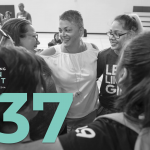It is a troubling truth, for patients and clinicians alike, that when a Black patient and a White patient are both admitted to a hospital in the US for the same medical condition (cancer treatment, for example), the White patient can be expected to fare better in the long run. The White patient is more likely to receive appropriate doses of medication for pain, undergo more extensive diagnostic testing, and get closer follow-up care than a Black patient, resulting in a better prognosis.
What, then, if we add gender to the equation? Women typically present with less specific symptoms of heart disease than men, and they are less likely than men to be diagnosed with a heart condition or receive appropriate treatment for it. Consider the case of an African-American woman with cancer and heart disease. Her prospects for high-quality care are likely to be dimmer. How about if she was a lesbian? Lesbian, gay, bisexual, and transgender (LBGT) patients often avoid traditional medical care systems due to a legitimate fear of discrimination, often leading to late diagnoses and subsequently poorer health outcomes.
The question of how patients with multiple social identities — racial, gender, sexual orientation, among others — navigate the US healthcare system, and how they fare within it, is one that more healthcare practitioners are confronting as our patient populations become increasingly diverse.
Confronting inequality in the healthcare system
Many people are familiar with health determinants, also known as social determinants of health. The Commission on the Social Determinants of Health noted in 2008 that these factors comprise systems of oppression that are caused by the unequal distribution of power in society, as well as an imbalance in income, merchandise, and services — leading to clear, demonstrable disparities in people’s lives. These include their access to education, their socioeconomic status, housing stability, and access to healthcare, among other factors, the effects of which diminish their chances of leading a full and productive life. These health determinants include race (and its oppressive associated system of racism), class (capitalism), ethnicity (ethnocentrism), color (colorism), sex and gender (patriarchy), sexual orientation (heterosexism), nationality and citizenship (nativism), and disability (ableism).
Other identities can also shape patient experiences that are often unaccounted for in physicians’ evaluations of patients. Socioeconomic factors such as employment status, income and wealth inequality, educational attainment, and housing stability are worthy of consideration in the medical evaluation of patients because there is added vulnerability in the convergence of these social classes and intersecting structures of disparity. Once one factors in other structural class identities, such as immigration status, language barriers, age, and ability status, one begins to realize the magnitude of the identities that individuals in any role, often ascribe to, either willingly or through the volition of others.
Intersectionality: A starting point for equity conversations
Intersectionality is associated with social determinants of health in a nuanced yet important way. Intersectionality questions the unfairness of the status quo and the meaning and interactions between these different social factors of privilege and oppression. It shuns the tendency to place blame at the individual’s feet by using the all-too-simple method of explaining health outcomes by attributing issues to individuals’ genetics or cultural and social behaviors alone. The focus is on power relations, and as such, intersectionality serves as a basis from which to advance equity and goals for social justice on behalf of marginalized communities that have been subject to and continue to experience structural inequalities.
Intersectionality theory was originally described in 1989 by feminist scholar and lawyer Kimberlé Williams Crenshaw, who highlighted the social location of power structures and multiple identities within an individual and within society, particularly in historically disadvantaged communities.
And this is the crux of intersectionality in a healthcare context — it disproportionally affects patients who are most in need of medical care. For example, intersectionality theory suggests that interactions between identities related to race and gender can be multiplicative in effect, either positively or negatively, depending on the social community or the social system of power to which one belongs. Racism and sexism for Native American or Black women, for example, are qualitatively different experiences than either the racial or gender aspect alone. Thus, the adverse effects of both experiences together would lead to a larger accumulation of both discriminatory interactions than either would alone.

Intersectionality in medical practice: Patient stories reveal challenges and solutions
Intersectionality has revealed itself in many instances in our medical practices. A 66-year-old African-American man presented in our outpatient clinic with rectal bleeding and abdominal pain. Despite his polite and pleasant demeanor, he was visibly terrified. His fear was not unjustified — his workup revealed a mass in his colon that had led to the confirmed diagnosis of colorectal adenocarcinoma. The cancer was limited to his colon and was treatable, but why had he not presented earlier in his disease course?
Subsequent visits and conversations with him were revealing. As a Black man, he had assumed that he would not be treated well or effectively by the US medical system, so he delayed seeking care until he could no longer ignore the months-long sight of blood in his stool. Before and during that time, he did not have medical insurance, further compounding his decision not to visit a physician. As a part-time security officer, he could not afford to pay for medical care. Even when he did eventually become insured by Medicare, he said that he “felt uninsured,” not being fully aware of the entirety of the medical coverage that this program for older people provided him. The threat of the Affordable Care Act (ACA) being repealed after the November 2016 US presidential election sent him into a mental tailspin, as he conflated the Medicaid expansion part of the ACA (which covers eligible low-income adults, children, pregnant women, elderly adults, and people with disabilities) with Medicare, believing that he could lose his coverage at any moment.
The convergence of our cancer patient’s age, race, employment status, and economic status strongly impacted how he engaged with the healthcare system. He approached this system that had the potential to heal his cancer with the pessimistic view of a structure ready to treat him as ‘other’ or ‘less than,’ and thereby unwilling or unable to provide him relief due to bias inherent in the healthcare system.
Another of our patients harbored similar feelings of alienation from the healthcare system, but for different reasons. A 40-year-old Black transgender female was diagnosed with HIV days before she was hospitalized with fevers. Upon her initial interactions with the medical team, she assumed that her identities — a transgender person of color, HIV-infected, professional sex worker, living in poverty — would be scorned within our healthcare system and prevent her from receiving adequate care.
Initially reluctant, she eventually began to share her life story and experiences once she felt assured of the team’s respect and commitment to her care. Historically, identities such as those of this patient have not always been accepted within the healthcare system. Each embodies health risks that have too often been ignored or disregarded by high-quality public health services. Intersectionality provided a basis upon which the team was able to advocate for this patient to promote her appropriate management within the healthcare system in light of the perceived pejorative dimensions of her various identities.
Yet another patient we cared for was a 16-year-old immigrant from Sierra Leone with sickle cell anemia. She was admitted to the hospital every few months with debilitating pain in her lower extremities from sickle pain crises. Whether because of recurrent cerebrovascular strokes resulting from her disease, or post-traumatic stress after having fled from her war-torn home country to the US several years before, she always presented in mental anguish. She would experience visual hallucinations and repeatedly utter the words, “I’ve got a pain,” with an inability to specifically localize it at times. The girl would wander the halls of the hospital ward as she improved clinically, whispering away to herself. Sometimes she would be discharged to the child psychiatric service for follow-up care, and sometimes to the hematology service.
The girl’s social determinants of health, including her Black race, gender, her African cultural background with limited ability to speak English, and mental health challenges, threatened to leave her in limbo in terms of her continuity of care following discharge from the hospital, as well as the risk of readmission. The medical team was cognizant of the principles of intersectionality in advocating for her care, both medically and socially, each time she left the hospital.
Healthcare systems, including hospitals and clinics, appear to recognize, in large part, the way the social determinants of health affect patients’ experiences within this system, but understanding of intersectionality is just beginning. Although it might seem logical to consider these factors as solely individual determinants whose accumulation is merely additive, this is a simplistic view that does marginalized communities a great disservice. As American sociologist Patricia Hill Collins notes, addressing “social problems…through mono-categorical lenses is inadequate.”
The result of bias in healthcare: Poorer outcomes for marginalized communities
Research on intersectionality demonstrates that our patients’ concerns about being under-treated or neglected based solely on their identities are not without validity. Multiple studies have found that implicit bias exists within many patient-provider interactions. This bias can take many forms, adversely affecting process measures such as minority patients’ willingness to adhere to prescribed medication regimens and clinicians’ advice on preventive medicine. Such bias can ultimately affect health outcomes such as infant mortality and cancer deaths. A US study conducted in 2017 showed that Black people and Hispanics have the highest rates of breast cancer diagnoses and mortality from the disease of all the populations studied. Non-minority women do not experience bias that is based on their race to the same degree (or arguably at all), a fact that has comparatively positive benefits for their breast cancer outcomes.
The list of disparities does not end there. A growing body of evidence, even in the pediatric literature, shows distinct differences in the intensity of end-of-life care for cancer provided to marginalized minority communities, as well as lower hospitalization rates and frequency of diagnostic testing in these populations. According to the Centers for Disease Control and Prevention (CDC), Black men and women were diagnosed with and died of colorectal cancer in the United States at much higher rates than any other population in the last twenty years.

What can we do about it? Addressing bias in the healthcare system
Addressing these issues is challenging. Clinicians must be cognizant of their prevalence and impact on patient’s lives and direct their care accordingly, expanding the scope of their outlook. Oftentimes, increasing the diversity of the healthcare team can be beneficial for patients with social determinants with which these team members can identify. Engagement with many sectors of the community, such as community-based organizations, and making inroads into the social environment in which patients live, can also yield positive outcomes in the long run. Providing competent training to clinicians on intersectionality will very likely bear positive results for their patients.
Healthcare professionals must understand intersectionality and the role that marginalization and social inequality in the context of multiple, interacting health determinants play in influencing and shaping the diverse, layered experiences of our patients living in this society. Physicians must also recognize the potential for intersectionality to serve as a tool to advance equity and social justice. It can represent an expansive foundational framework for understanding inequality, structurally oppressive systems, and the confluence of social determinants of health.
Increased awareness of these factors can lead to a willingness to bring this knowledge into physicians’ clinical encounters. Our patients, like us, do not exist in isolated bubbles, identifying with a single social construct or perspective of self, and a realization of this reality can have a tremendous impact on the health of these marginalized communities.






